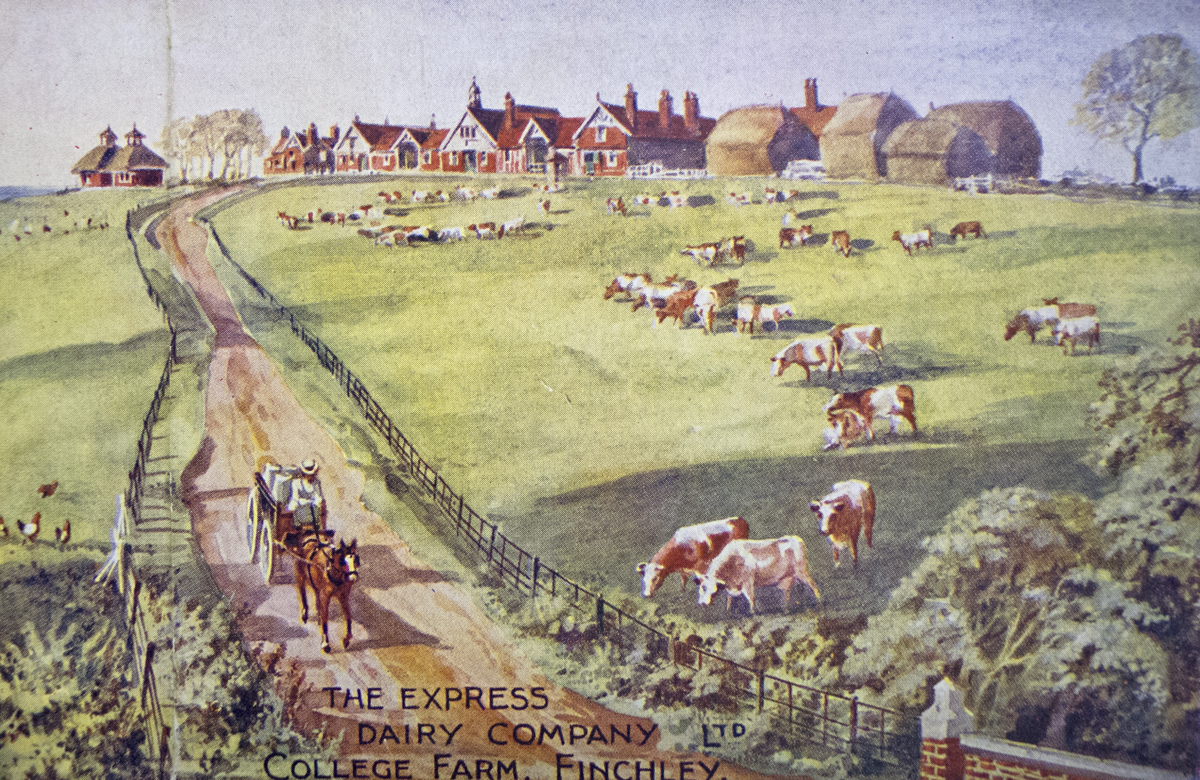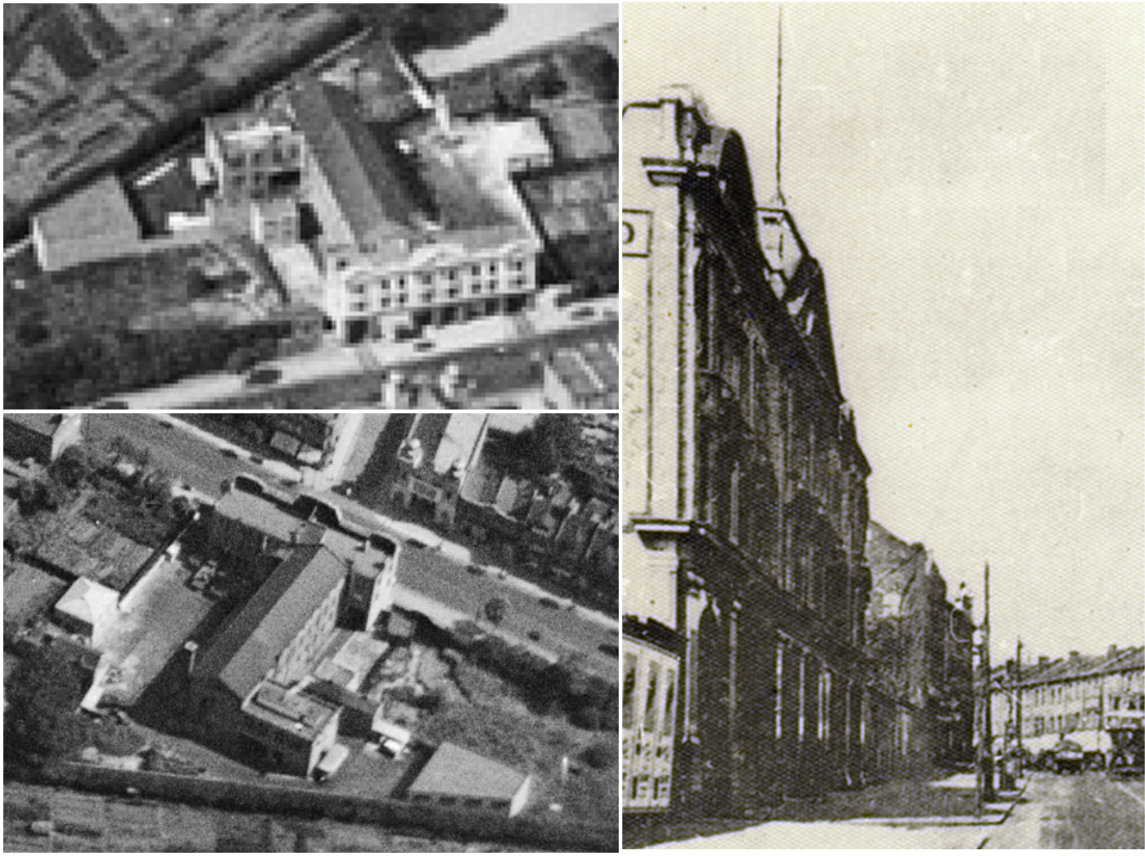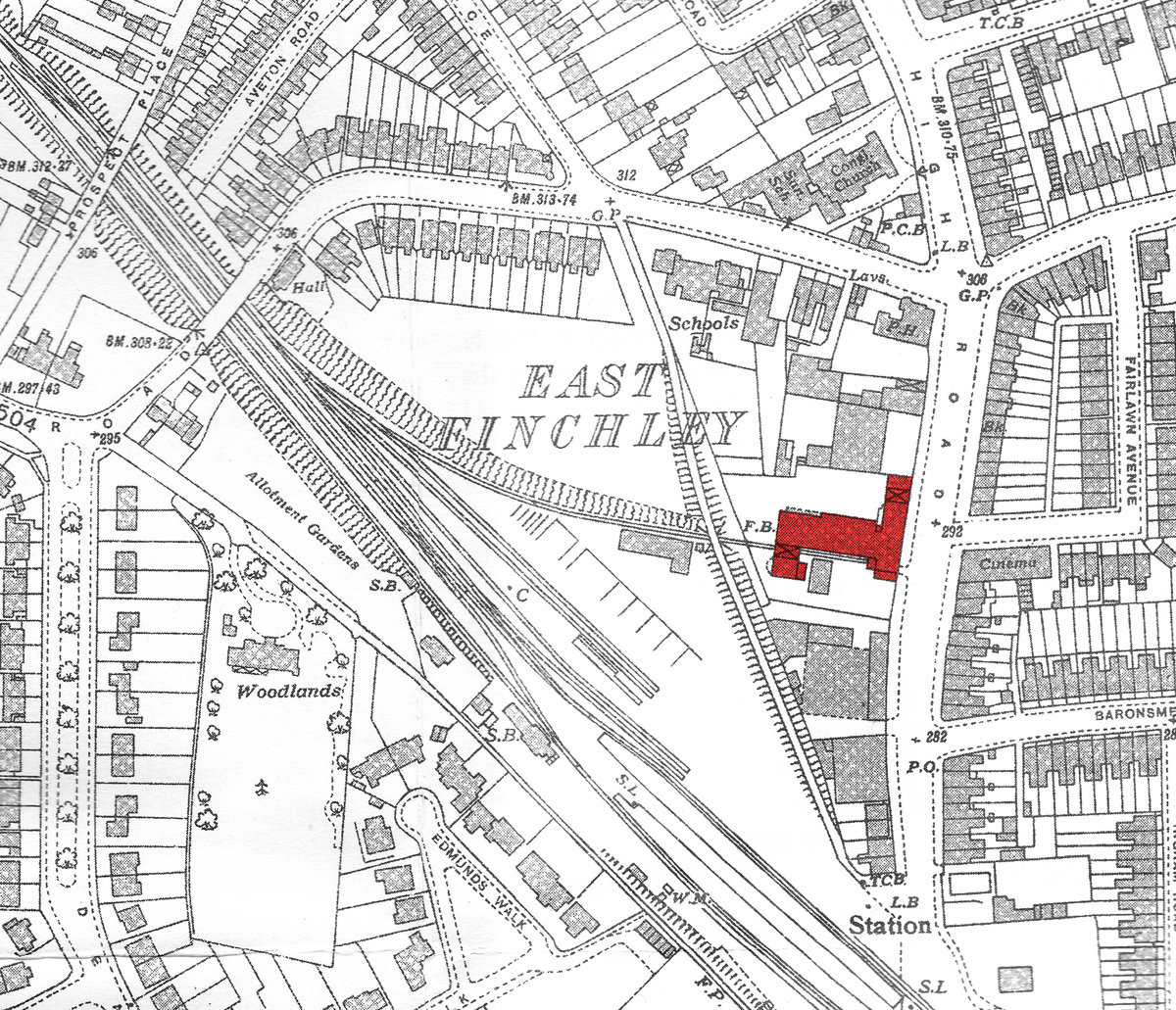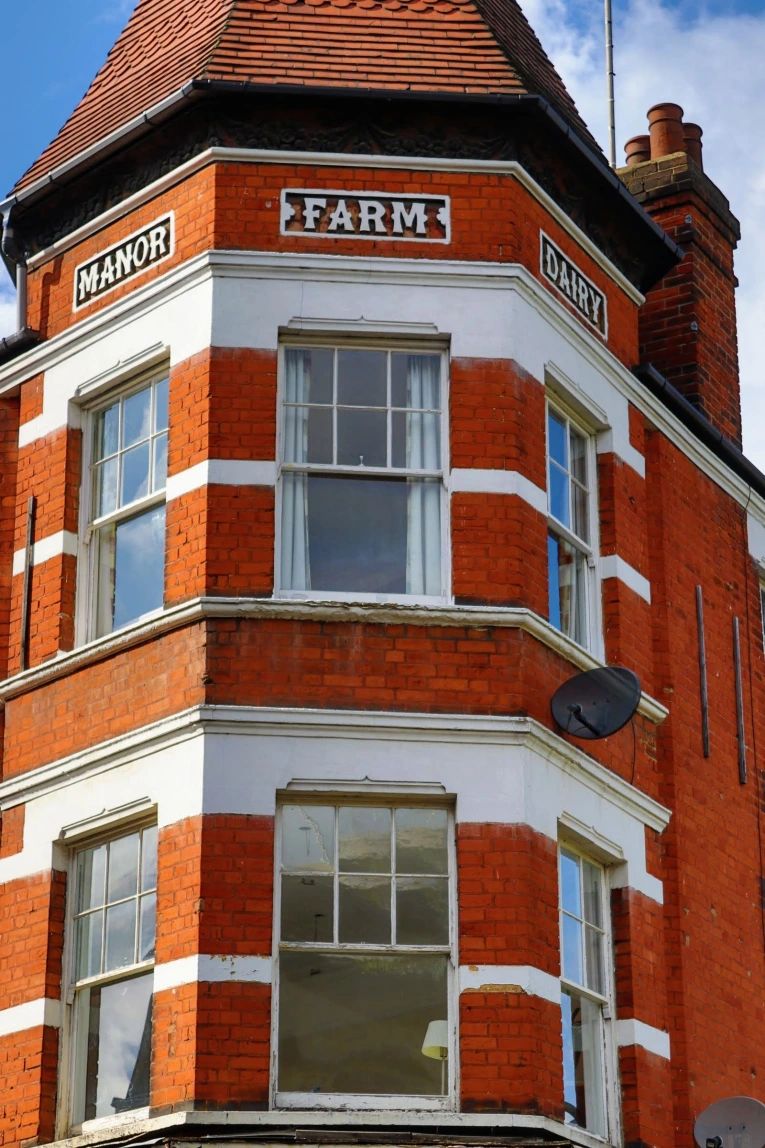 If
you walk along Central Avenue of East Finchley Cemetery, just past the circus
you'll see the family grave of the Barham family. George Barham was the founder
of Express Dairies, so-called because he harnessed the power of the new railways
to bring milk to London from outside. His son Titus is here too, and it is
he who named College Farm after the school whose gleaming tower could be seen
on the horizon. Three of Georges sons died in infancy. The fifth son Arthur
is not here. He went on to found United Dairies
If
you walk along Central Avenue of East Finchley Cemetery, just past the circus
you'll see the family grave of the Barham family. George Barham was the founder
of Express Dairies, so-called because he harnessed the power of the new railways
to bring milk to London from outside. His son Titus is here too, and it is
he who named College Farm after the school whose gleaming tower could be seen
on the horizon. Three of Georges sons died in infancy. The fifth son Arthur
is not here. He went on to found United Dairies
George Barham stole a march on many local competitors by harnessing the railway to bring in milk to London from far and wide. When local herds caught diseases, it was George that benefited. (For transporting his milk GB had designed the first closed churn cylindrical galvanised steel sheet bound with wooden hoops.in 1866.) The Express Dairy company was founded in 1882, with headquarters in Bloomsbury, and by 1888 it had fourteen branches, two butter processing dairies and two dairy farms, both in Finchley.
Although Barham acquired Sheephouse farm in 1868, it was in 1882 that he commissioned Frederick Chancellor, an ecclesiastical architect, to draw up plans to replace it with a model dairy farm. It was to be a centre of innovation and a showcase for the public. By 1890 there were 40 cows of three breeds (Guernseys, Shorthorns and Kerry) producing over 28,000 gallons of milk (compared with bringing 30,000 gallons of milk by rail into the capital every night) and in 1884 it produced the first bottled milk in the country, followed 40 years later by the first TT bottling facility..
The distinctive twin-roofed dairy building is visible on the left of the picture. Originally thatched it was later tiled. Around this time, an industrial process for turning milk to butter had been invented and soon the dairy building was repurposed for selling cream teas.
In addition to the cows, there were poultry houses and all sorts of farm machinery for pulping root vegetables for winter feed. There were horses to pull delivery carts and over one hundred acres to provide hay. Watercress beds in Mutton Brook provided another source of income.
The second dairy farm was at Kenwood.
Around 1880, the family moved from Bloomsbury to Sudbury, into Crabs House and bought the mansion in whose grounds it stood in 1895, renaming it Sudbury Park. Sudbury Park Farm was opened by the Barham family in 1897, its fields having been part of a previous farm, known as North Farm.
When George died, Titus inherited the retail business and Arthur the wholesale production and distribution. A bitter row meant that Arthur used his inheritance to form a rival company, United Dairies while Titus had to build a new supply business in a hurry. United Dairies would take over their main rivals in Finchley - Manor Farm, more of that next.Manor Farm Dairies
 The
Manor Farm in question was not the one in Finchley but was in Highgate on
land belonging to Lord Mansfield, land which incidentally extended into Finchley.
Founded around 1875 by Joseph Wilmington Lane, and a large offices and stables
complex was later built on East Finchley High Road opposite Fairlawn Avenue.
It was an imposing building - five bays wide and three storeys high; sadly
no good photo has been found. Milk would come in by rail in glass lined wagons
to be bottled or transferred to milk floats initially pulled by horses or
ponies, the horses being stabled on the ground floor. It was taken over by
United in 1917. Later on it had its own branch line directly to the building
where the wagons were shunted in and out by a small petrol engined locomotive.
In the 1940s about 12,000 bottles of milk were produced.
The
Manor Farm in question was not the one in Finchley but was in Highgate on
land belonging to Lord Mansfield, land which incidentally extended into Finchley.
Founded around 1875 by Joseph Wilmington Lane, and a large offices and stables
complex was later built on East Finchley High Road opposite Fairlawn Avenue.
It was an imposing building - five bays wide and three storeys high; sadly
no good photo has been found. Milk would come in by rail in glass lined wagons
to be bottled or transferred to milk floats initially pulled by horses or
ponies, the horses being stabled on the ground floor. It was taken over by
United in 1917. Later on it had its own branch line directly to the building
where the wagons were shunted in and out by a small petrol engined locomotive.
In the 1940s about 12,000 bottles of milk were produced.
The farm was obliterated by the construction of Aylmer Road although many of the Dairy’s retail buildings, like the one at Victoria Parade in Church End, remain today.

